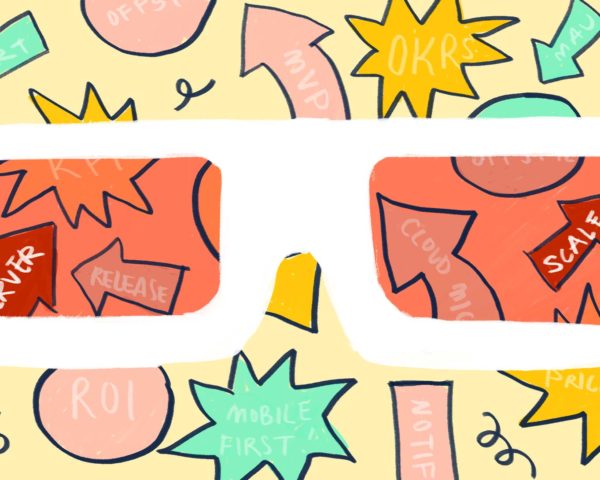5-second summary
- Cross-cultural collaboration presents unique challenges, but if done right, can increase creativity and improve profitability.
- Building awareness, adjusting communication strategies, and practicing active listening can boost collaboration efforts at the individual, team, and organizational levels.
Your team might not be heading to space anytime soon, but NASA serves as a fitting example of what can happen when cultural idiosyncrasies get the best of you.
In the late 1990s, NASA launched the Mars Climate Orbiter (MCO). This probe was supposed to study Mars from orbit and relay messages to the Mars Polar Lander and Deep Space probes.
Sounds pretty cool, right? It was…until the MCO failed to re-establish contact after passing behind Mars.
There was nothin’ but radio silence. No signals were received, and it was concluded that the orbiter had tumbled into the Martian atmosphere and disintegrated.
You might think the reasons behind this slipup are as complex as, well, rocket science. Not quite. When NASA looked into what caused the failure, the answer was pretty straightforward (and admittedly, a little embarrassing): the commands from Earth were sent in imperial units, while the MCO used metric. Yikes.
Real talk: it’s easy to get cross-cultural collaboration wrong
Working cohesively as a team isn’t always second nature. Add in language barriers, global time zones, and contrasting cultural norms, and it can be downright difficult to get teamwork right.
But putting in the work to streamline cross-cultural collaboration has measurable advantages, including increased creativity and improved profitability. Let’s dig into four research-backed tips you can use to improve your cross-cultural collaborations and thrive as a team – even if you’re spread across the globe.
1. Build cultural metacognition (it’s not as hard as it sounds)
Cultural differences may be awkward to address, but researchers have found that it’s beneficial to recognize these variations while also reflecting on our own assumptions about other cultures. This is called “cultural metacognition.”
“To the extent that creativity is about the recombination of existing ideas, then combining ideas that haven’t been connected before creates the potential to produce something new and useful,” explains organizational behavior researcher Roy Y.J. Chua in an article for Harvard Business School.
“I often compare it to the heightened awareness you have when driving in a foreign city, where you will pay more attention to the road signs and traffic signs,” Chua adds. “It’s this kind of heightened awareness and reflection about what I think about other cultures and how other cultures think about me that helps cross-cultural creative collaboration.”
So rather than glossing over discrepancies between team members, actively keep an eye out for them.
Do you notice that one team member never speaks up during meetings? Have you realized that one of your colleagues looks down at their paper and takes notes when you’re speaking rather than maintaining eye contact? Consider whether those tendencies relate to their cultural background, their personal characteristics, or a mix of both.
The more attuned you are, the better equipped you are to proactively address and respect the cultural diversity on your team. This is also an area where you, as an individual, can really make a difference. Chua’s study found that even if one person in an interaction has higher cultural metacognition, creativity increases. So heightening your own understanding can be a major win for your entire team.
2. Override your brain’s natural tendency to take shortcuts
There’s a reason we often make assumptions about other people: they’re easy. They require very little cognitive effort. Our brains have a lot going on, and they try to work as efficiently as possible.
“While the large number of possible combinations of cell connections allows for higher-ordered thinking, this is a big problem evolutionarily in terms of energy cost,” says Dr. David McCormick, a professor of neurobiology at Yale School of Medicine. “Therefore, the brain has to encode things efficiently to save energy.”
Assumptions are a big part of how the brain makes its own job easier. But making broad generalizations can be troublesome when it comes to cross-cultural collaboration.
Your team will collaborate far more efficiently if you can help people get to know each other on a more personal level. This can be a key step in avoiding unintentional inferences based on culture.
One of the best ways to do this is to have everybody on your team create a “user manual” to communicate how to work effectively with them. This can address logistics (like what time zone they’re in), as well as deeper information like:
- How they prefer to receive feedback
- What time of they feel most focused and productive
- Best methods for communication
Schedule a meeting to discuss each team member’s user manual, giving individuals a chance to provide additional context. The entire team will benefit from being able to ask questions and pick up on nonverbal cues.
After your team has discussed each person’s document, store those manuals somewhere safe and accessible so everybody has a helpful resource to refer back to and improve their work together.
3. Supplement your verbal communication
When you have team members who all have different native tongues, there are tons of language nuances and related non-verbal cues you might not be aware of – until they become a problem.
Dr. Bates Hoffer is a co-founder of the International Association for Intercultural Communication Studies (IAICS). In his research on miscommunication across cultures, he tells a story of an American scholar who spent years in Japan and “thought he had a great sense of humor for the Japanese. His humor provoked smiles and a type of laughter, but he apparently did not realize that the smiles and laughs were often only from embarrassment—at times acute embarrassment.” Hoffer points out that if the scholar had been more aware of nonverbal communication norms in Japan, he would have had an easier time navigating the complex nature of cross-cultural communication.
Even words themselves can get complicated. The obvious example is if you were to order “chips” in the UK, you might be surprised if fries landed on your plate.
There are many ways words and conversational cues can fail us when working with diverse cultural groups. That’s why it’s helpful to supplement your team communication with methods that aren’t as easily misconstrued. Encourage your organization to share information using visuals, like images, charts and graphs, and demonstrations.
Visual communication tends to be less subjective, and can help prevent the crossed wires that occur when you rely solely on words.
4. Use active listening and summarizing to boost understanding
When you think about communication, it’s easy to be one-sided, because you naturally think about the messages you’re putting out there. But listening is just as – if not more – important, especially when it comes to cross-cultural collaboration.
Active listening involves dedicating your entire focus to a speaker in the interest of fully comprehending what they’re saying. A key part of active listening is restating what somebody told you to confirm your understanding.
Give this a try on your own team. Instead of ending a meeting with a yes/no question like, “Does everybody understand what to do next?” dedicate a few minutes to having everyone take a turn explaining what their own next steps are.
One study found that participants who received active listening responses felt more understood than participants who received simple acknowledgments. While it might feel a little strange at first, encouraging people to summarize what was discussed will mitigate mixed messages and keep everybody on the same page.
Your diverse team can soar
Dealing with cultural norms and language differences can be challenging, but there’s no need to tiptoe around those variations – especially when there’s so much to be gained by leaning into them.
Use the tips we outlined above, and you’ll build a multicultural team that not only does great work together, but actually enjoys doing it.





 )
) 






































